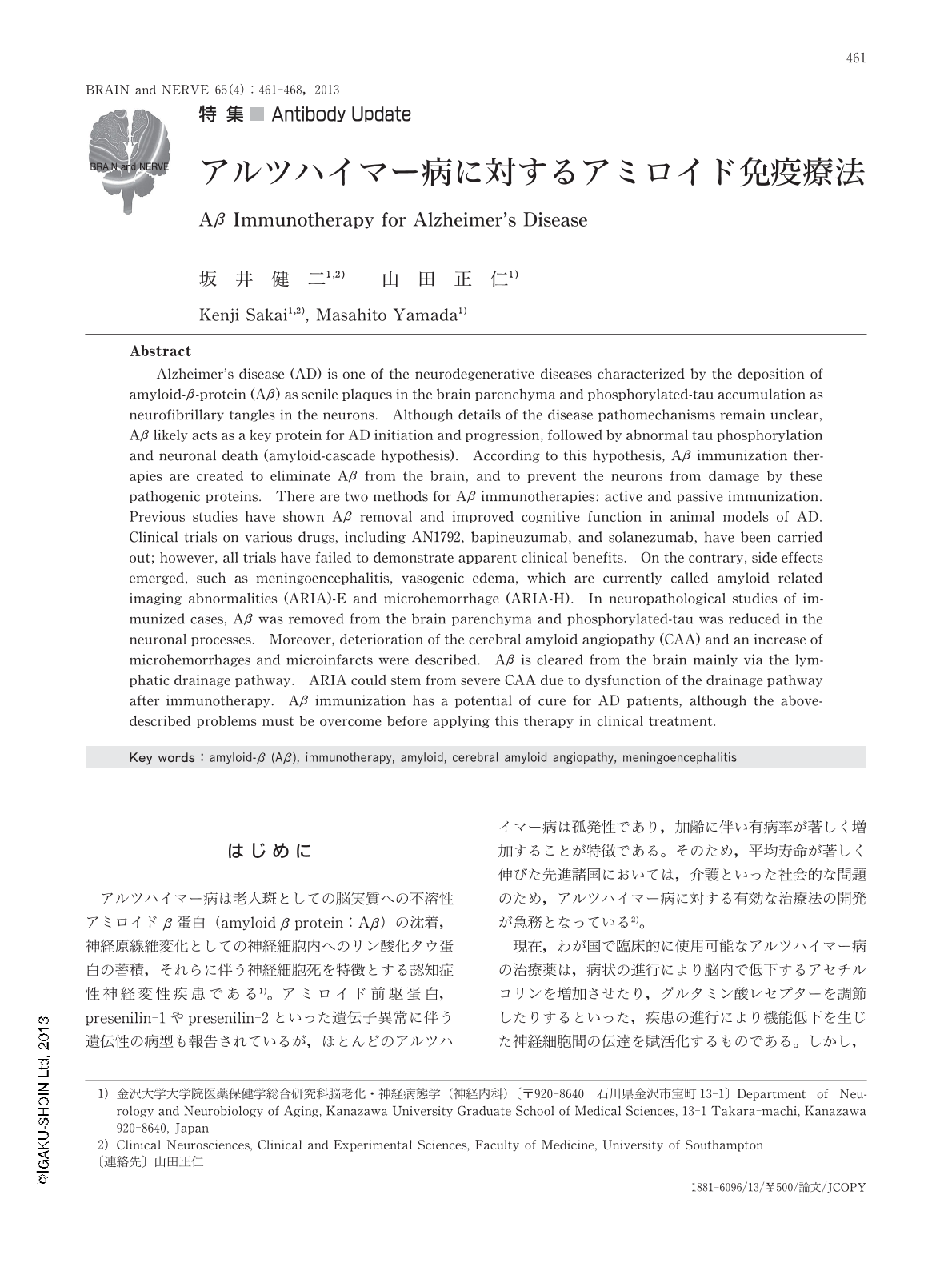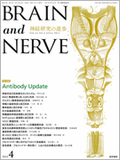Japanese
English
- 有料閲覧
- Abstract 文献概要
- 1ページ目 Look Inside
- 参考文献 Reference
はじめに
アルツハイマー病は老人斑としての脳実質への不溶性アミロイドβ蛋白(amyloid β protein:Aβ)の沈着,神経原線維変化としての神経細胞内へのリン酸化タウ蛋白の蓄積,それらに伴う神経細胞死を特徴とする認知症性神経変性疾患である1)。アミロイド前駆蛋白,presenilin-1やpresenilin-2といった遺伝子異常に伴う遺伝性の病型も報告されているが,ほとんどのアルツハイマー病は孤発性であり,加齢に伴い有病率が著しく増加することが特徴である。そのため,平均寿命が著しく伸びた先進諸国においては,介護といった社会的な問題のため,アルツハイマー病に対する有効な治療法の開発が急務となっている2)。
現在,わが国で臨床的に使用可能なアルツハイマー病の治療薬は,病状の進行により脳内で低下するアセチルコリンを増加させたり,グルタミン酸レセプターを調節したりするといった,疾患の進行により機能低下を生じた神経細胞間の伝達を賦活化するものである。しかし,これらの治療法はアルツハイマー病の症状を一時的に緩和する効果しかなく,アルツハイマー病病変の進行を抑制することはできない。これらの治療法とは異なり,アルツハイマー病において中枢神経系に蓄積する異常蛋白を,免疫機能を利用することによって除去し,根本的な治療を行うことを企図したものがアルツハイマー病に対する免疫療法である。
アルツハイマー病における免疫治療について,その臨床病理学的背景,動物実験や先行研究での結果,主な副作用,今後の展望について概説する。
Abstract
Alzheimer's disease (AD) is one of the neurodegenerative diseases characterized by the deposition of amyloid-β-protein (Aβ) as senile plaques in the brain parenchyma and phosphorylated-tau accumulation as neurofibrillary tangles in the neurons. Although details of the disease pathomechanisms remain unclear, Aβ likely acts as a key protein for AD initiation and progression, followed by abnormal tau phosphorylation and neuronal death (amyloid-cascade hypothesis). According to this hypothesis, Aβ immunization therapies are created to eliminate Aβ from the brain, and to prevent the neurons from damage by these pathogenic proteins. There are two methods for Aβ immunotherapies: active and passive immunization. Previous studies have shown Aβ removal and improved cognitive function in animal models of AD. Clinical trials on various drugs, including AN1792, bapineuzumab, and solanezumab, have been carried out; however, all trials have failed to demonstrate apparent clinical benefits. On the contrary, side effects emerged, such as meningoencephalitis, vasogenic edema, which are currently called amyloid related imaging abnormalities (ARIA)-E and microhemorrhage (ARIA-H). In neuropathological studies of immunized cases, Aβ was removed from the brain parenchyma and phosphorylated-tau was reduced in the neuronal processes. Moreover, deterioration of the cerebral amyloid angiopathy (CAA) and an increase of microhemorrhages and microinfarcts were described. Aβ is cleared from the brain mainly via the lymphatic drainage pathway. ARIA could stem from severe CAA due to dysfunction of the drainage pathway after immunotherapy. Aβ immunization has a potential of cure for AD patients, although the above-described problems must be overcome before applying this therapy in clinical treatment.

Copyright © 2013, Igaku-Shoin Ltd. All rights reserved.


